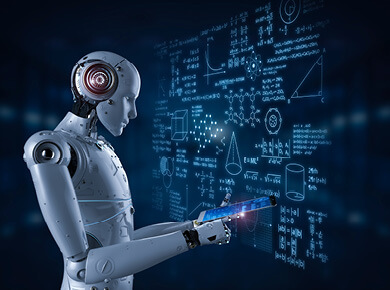How AI and IoT Are Shaping the IT Workforce
AI and IoT are putting pressure on an already stretched information technology workforce.
12 September 2018 | By Lara Doyle

From skills demand and workforce planning to the suppression of AI adoption as well as its possible applications to workforce development, AI is already shaping the future of the tech talent landscape, and it’s not even really here yet.
Emerging and classic skill sets are in high demand
Most enterprises are further away from a full-scale artificial intelligence revolution than the media hype would have you believe. Anyone who tells you the next big thing is about to change everything right away hasn’t lived through an ERP implementation and seen how deadline-shattering and painful systems integration can be.
But this won't stop enterprises from snapping up the limited supply of available AI talent. We saw this phenomenon a few years ago when new technology giants like Facebook snatched up all the talented developers they could find—before there were even projects to work on. The fear of being ‘Amazoned’ is making traditional enterprises anxious to be prepared before the next disruption catches up with them.
The talent for war has commenced. Top-tier machine learning and artificial intelligence PhDs who also know how to code have found themselves (quite profitably) in the middle of transfer deadline day-like bidding wars. Machine learning engineers and data scientists are seeing their stock rise; software engineers and masters of the algorithm are next.
These latest trends are bolstering a classic skill set—enterprise architecture. IoT and AI are enormously complex and involve enormous data warehouses or expensive cloud options, increased computing bandwidth and unfathomable levels of systems integration. All of this will require an economical technology architecture that will be flexible enough to pivot with the upcoming unknown change.
Workforce planning will become less rigid
Talent shortages and the cost of IT labour mean that the people leading IT workforce planning—whether that’s IT leaders or HR—are going to become a lot more flexible about their staff portfolios. Workforce portfolios will no longer be held to certain percentages of contract, permanent and statement of work (SOW).
Instead, leaders will be granted more flexibility to choose appropriate workforce solutions from a variety of options, including contract labour, internal development, apprenticeship programs, setting up new work locations based on the availability of talent, plus, of course, hiring and contracting.
AI and IoT won't be scalable without skills development and workforce adoption
Gartner recently told IT leaders to start investing in AI, IoT and InfoSec in the coming year. Realistically, AI and IoT are unlikely to cause disruption to most organisations this early. This is primarily because, despite successful limited-use cases, particularly with regards to IoT, organisations have neither the computing bandwidth nor the data analytics expertise to harness IoT’s capabilities.
With regards to AI, two simple challenges will inhibit its integration into the organisation: investment and change management when it comes to workforce adoption of new technologies and methodologies. That’s not to say the organisation shouldn’t be preparing.
However, AI will impact workforce development
AI is likely to effect workforce development sooner rather than later. The pace of the technological evolution is leaving business leaders in the dark about what precise skills are required for a role, and they are therefore asking for everything—compounding the already significant shortage in talent.
Faced with challenges posed by talent shortages and the need to stay abreast of technological advancement, new AI applications can help large enterprises identify in-house talent for redeployment. AI could create candidate success profiles and identify likely candidates for development and upskilling, preparing them for when the need arises.
Just imagine the implication of applying AI to picking the perfect fantasy football team!